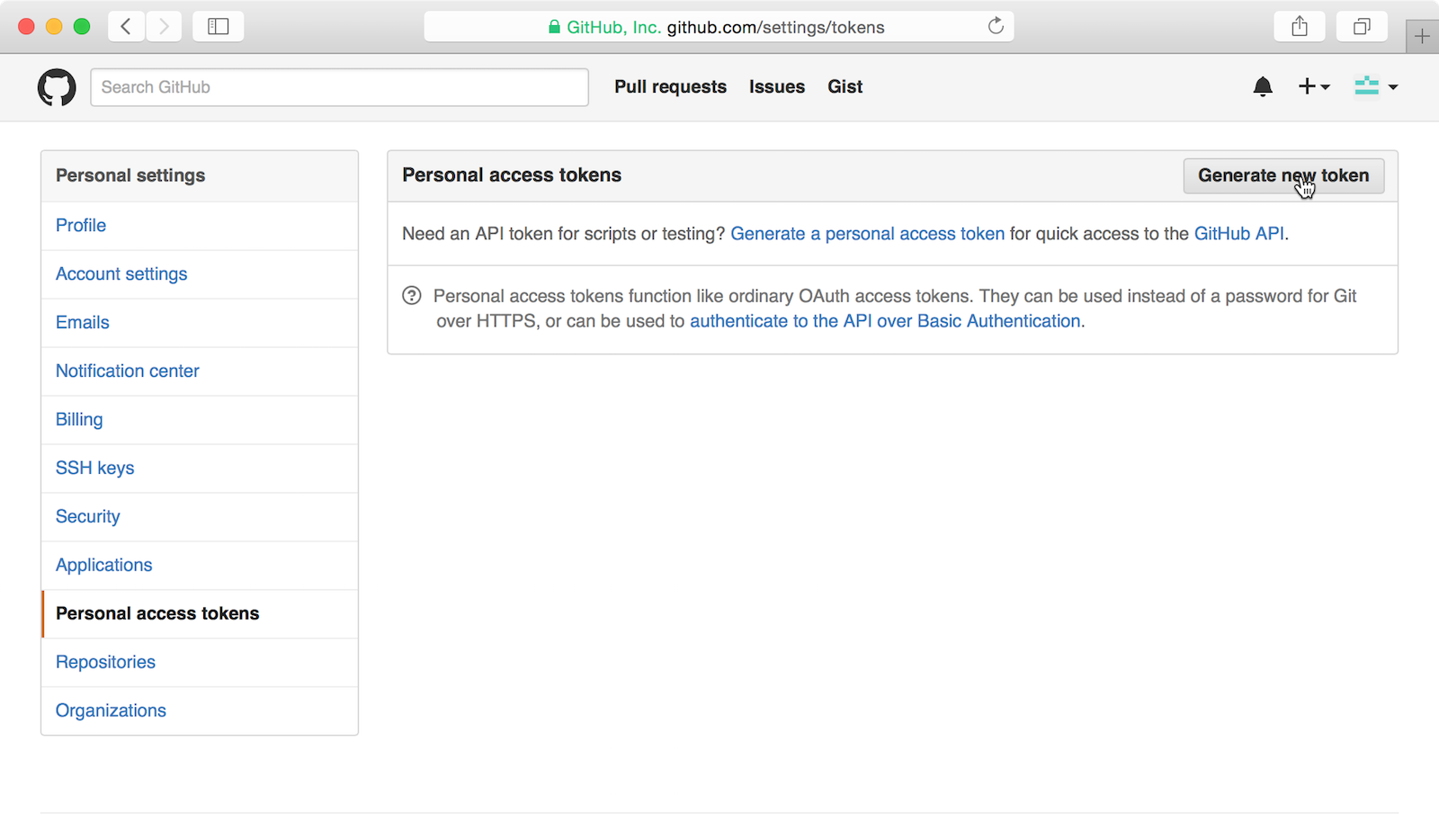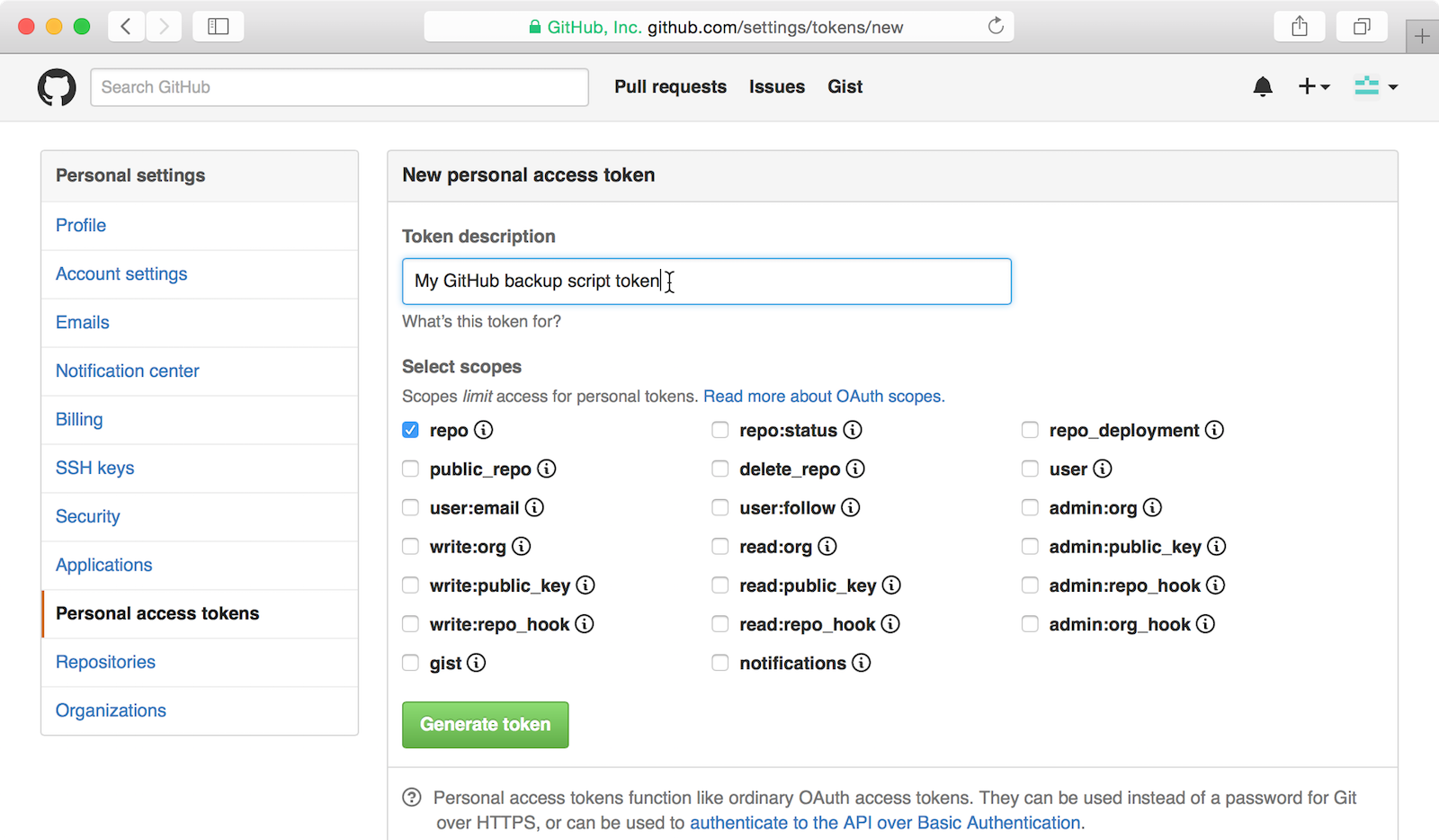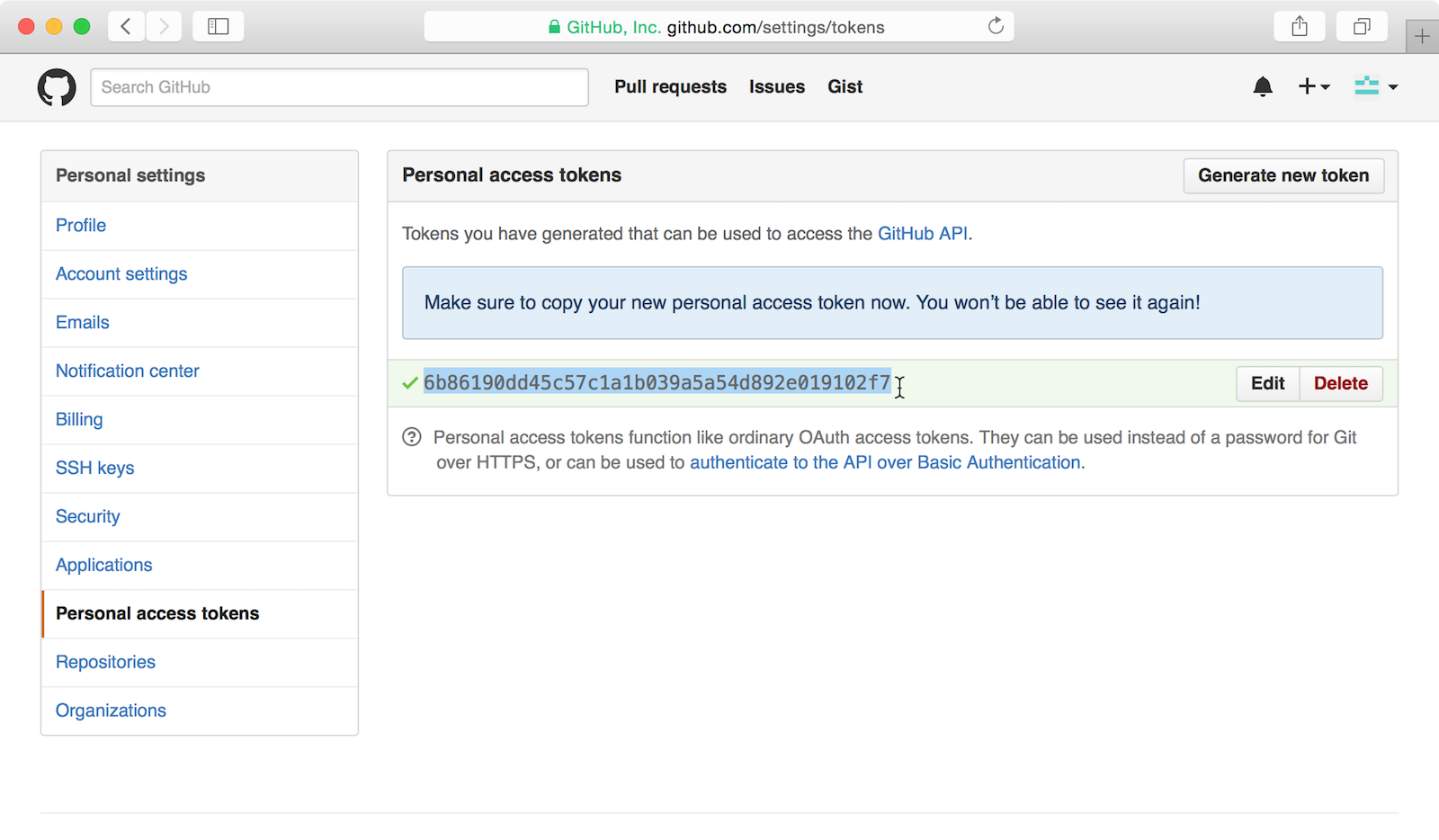This directory contains a script, backup.py, for backing up GitHub repositories.
The script requires a GitHub token and a destination directory. It then uses the token to populate the destination directory with clones of all the repositories the token can access.
Repeated runs only update the already existing backups and add new repositories, if any.
Install the required Python dependencies using pip3:
$ pip3 install -r requirements.txt
For authorization you need to create a new personal GitHub token. You can do this from the GitHub settings, under the Personal Access Tokens tab.
When you click the Generate new token button you enter the token creation screen. Here you should give the token a descriptive name and choose its scopes, which basically determine what the token is allowed to do.
To backup public and private repositories you need to select only the repo scope. If you have no need for private repositories just choose the public_repo scope.
After clicking the Generate token button you're presented with the generated token. Remember to store it now, as GitHub won't show it to you anymore!
In the next example let's assume your token is 6b86190dd45c57c1a1b039a5a54d892e019102f7 as in the above image.
To run the script you need a JSON configuration file. For an example see the included file config.json.example.
As an example let's create a file, config.json. This file should contain the token we just created and the destination directory where we want to back up the repositories:
{
"token": "6b86190dd45c57c1a1b039a5a54d892e019102f7",
"directory": "~/backups/github.com"
}
By default, all repositories you have read access to are backed up. To choose which users' and organizations' repos are backed up, add owners to config.json:
{
"token": "6b86190dd45c57c1a1b039a5a54d892e019102f7",
"directory": "~/backups/github.com",
"owners": ["username", "anotherusername"]
}
After preparing the token and the configuration file you now can run the script:
$ python3 backup.py config.json


